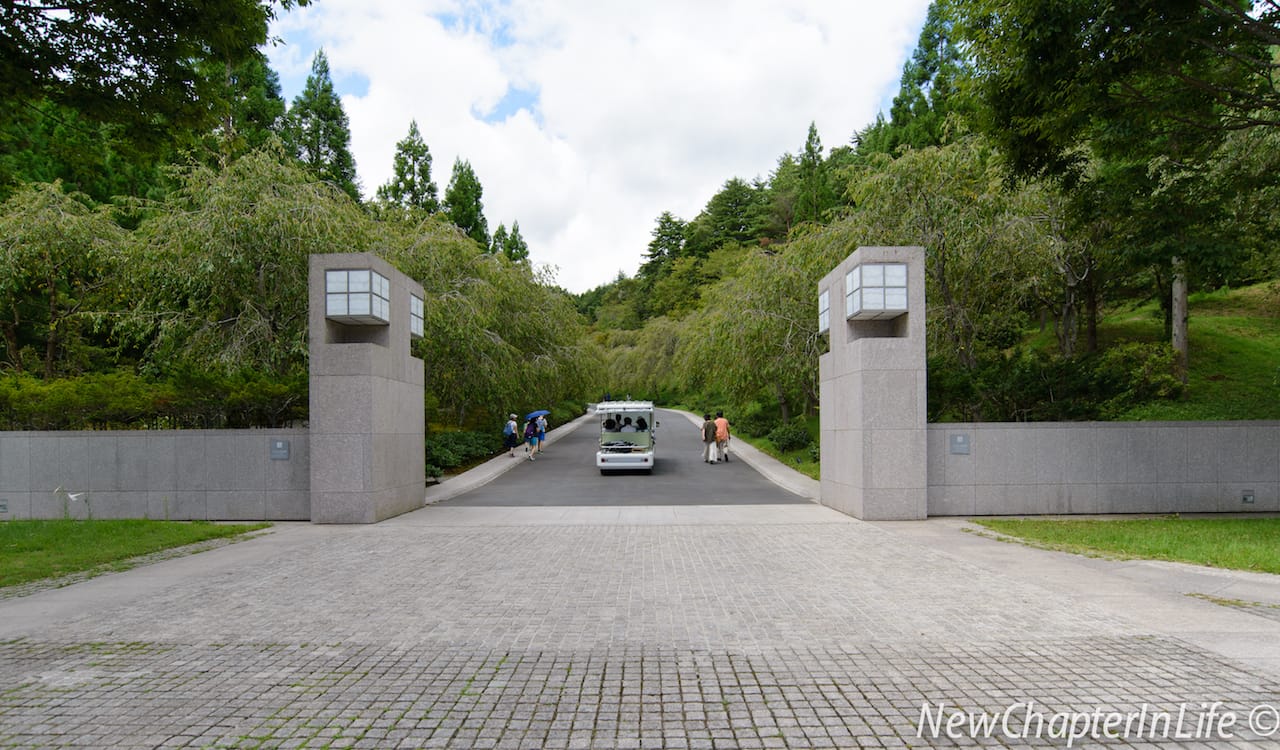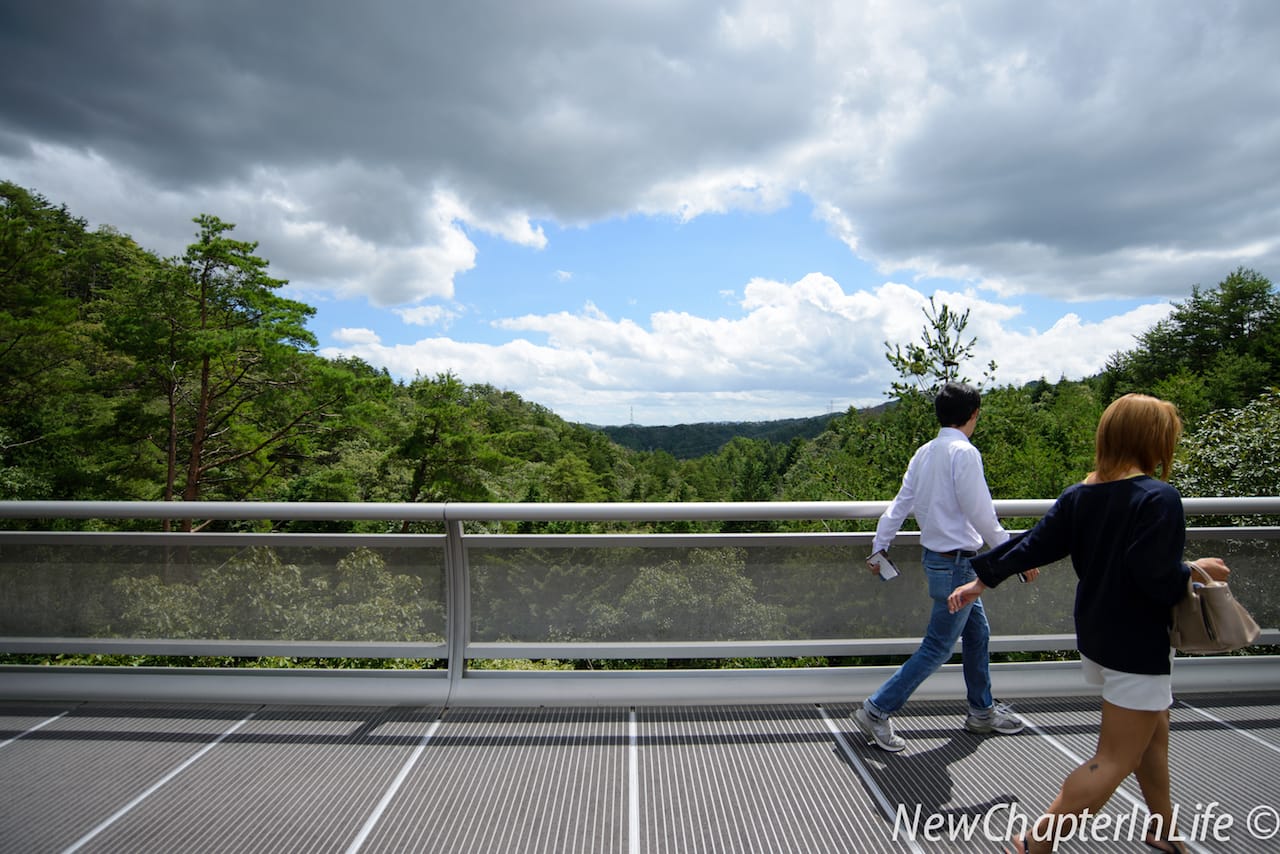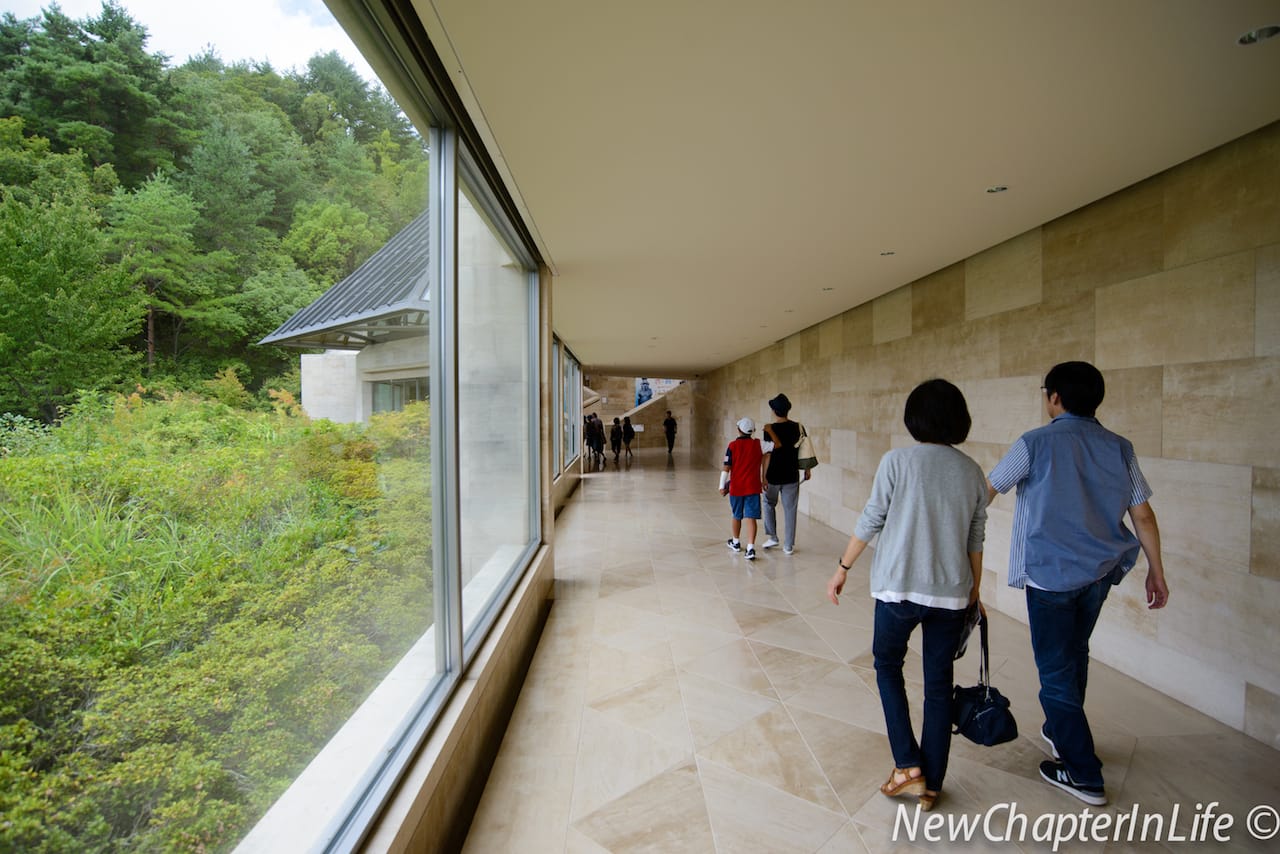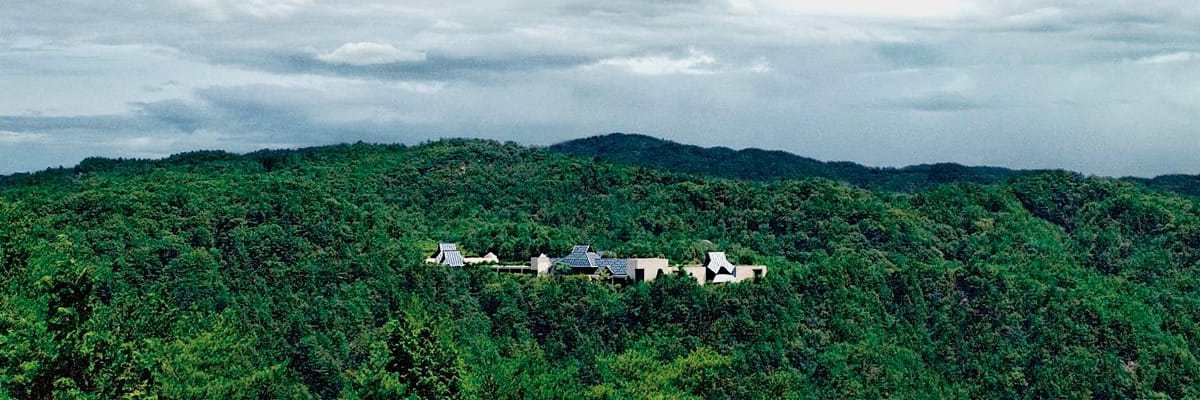Miho Museum (美秀美術館) is a private museum managed by the religious group Shinji Shumeikai (神慈秀明会). It is named after the founder of the group, Mrs. Mihoko Koyama and initially housed the vast collection of tea ceremony utensils and Asian antiquities collected by her. The collection was subsequently grew into a vision of an art museum, aligning with Koyama’s vision of promoting beauty, peace and joy through art.
The museum is a place that I have been longing for a visit.
Yes, for a very long time.
In fact, I had been there before but not exactly visited the museum. Why?

Back in 2006 while I was touring with my wife in Kyoto, we had no specific place to go on one rainy day. I looked up the GPS searching for places to go around the area. All of a sudden, a very familiar name came to sight, Miho Museum – one that I learnt from a documentary years ago.
Without any further checking, I drove up to Miho Museum. That trip was a little scary. The rain was quite heavy and it was terribly foggy. It took me more than an hour to climb along those narrow and hilly roads. By the time I arrived, Oh My God, I found that the museum was closed few days ago for change of exhibit.
So if you want to visit Miho Museum, make sure to check their website for the museum schedule.
During my recent holiday tour to the Biwako area, I finally have the chance to visit the Miho Museum.

Why so Special?
The story began with the Joy of Angels Bell Tower, designed by the famous Chinese American architect I. M. Pei, at Shinji Shumeikai International in Misono. I. M. Pei, born in 1917 in China and went to US for studying architecture. Major design works included the National Center for Atmospheric Research in Colorado, the John F. Kennedy Presidential Library and Museum in Massachusetts, the East Building of the National Gallery of Art in Washington DC, Bank of China Building in Hong Kong, Bank of China Head Office in Beijing and Grand Louvre in Paris.
In 1991, thrilled by the success of the Bell Tower, Miss Koyama commissioned Pei to build the Miho Museum, located on the mountain of Shigaraki, Shiga Prefecture.
Pei’s design was inspired by the famous Chinese tale of “Peach Blossom Valley” by Tao Yum Ming.
There once lived a fisherman in Eastern China. One day, as he was rowing up a mountain stream, he came across a peach orchard in full bloom

At the end of the orchard, he noticed a ray of light coming from a small cave at the foot of a mountain.

Once inside, he found himself on a narrow road,

but traveling deeper, a splendid view suddenly opened before him.


There was the Shangri-La.

As the piece of land was within a nature reserve, there were a number of restrictions that must be followed:
- Any building structure here must be opened to public – Despite the museum is privately owned, it is designed for public visit
- Height of building must not exceed 10 meters – To meet the restriction without downsizing, 80% of the museum is built deep inside the mountain with only just 20% is exposed. Trees and earth were removed to make place for the building site and then relocated back once the construction was completed.
- All building structures must be sloped and not affecting the natural environment of the area – This is how Mr. I. M. Pei making use of basic geometric shapes to design the silhouette to be in-lined with the mountains here – An architectural masterpiece.


How to Get There?
Public bus service operated by Teisan is available from the Ishiyama JR Station to the Miho Museum Bus Stop. Bus frequency is about once in every hour.
You can also go by car via Shiga Prefectural Route 12 towards Shigaraki. Free parking space is available in front of the museum. However, pay attention when driving along Route 12 as it is steep and narrow. There are many sections that only support single lane traffic. In fact, the museum will be closed during winter period from December to March of the following year due to snowing.
Since we lived in hotel next to the Seta JR Station and the bus stop, we took a slightly different route by boarding the Teisan bus at the station towards Ishiyama JR Station and changed to the Miho Bus at the Hashimoto Bus Stop.








Our Visit to Miho Museum
Other than taking the public bus or by car, there are also bikers and cyclists who enjoyed riding up the steep roads to the museum.

After getting off the bus next to the parking area, the first place came to sight is the Reception Pavilion where the ticketing counter is located. It also housed one of the two restaurants, the Peach Valley, where we would have our lunch later on.





Admission fee is ¥1,100 for adults and ¥300 for kids over age of six.

Before going into details, take a look at the aerial views of the Miho Museum.


Free electric cart is available to take you along the Approach to the main museum block on the other side of the mountain.

To better enjoy the scenery of the nature reserve, we deliberately walked along the Approach instead.

If you looked back from the tunnel and at the right season (of course I’m not!), you would have a view full of the cherry blossom trees, a vibrant pink color that looked really great.





Architectural View of the Miho Museum

1F – Miho Museum
Here it comes the Entrance Hall.

It’s really hard to describe the scenery in words.
Mr. I. M. Pei cleverly making use of natural light as the key and utilised basic geometric shapes as the building blocks to the Museum.
Right in front of the windows are old pine trees that were removed during building of the Museum and relocated back afterward. Their original locations and postures were carefully maintained. A respect to the environment and the mastery work of the Japanese engineers and builders.
The long wooden bench on the lower left of the above photo was craved out from one tall pine tree. The way it was cut was to preserve the original shape of the trunk.
At the far end, you would also see the Bell Tower at Misono and the Shrine of Shumei located at the headquarters of the Shinji Shumeikai.


2F – Miho Museum






B1F – Miho Museum





Lunch at the Miho Museum
Our visit to the Miho Museum couldn’t be completed without having the wonderful lunch there.
At the South Wing of the Museum, there is the Pine View Tea Room serving drinks, sandwiches and desserts. A good place for a break during your visit to the museum collection. As we all felt hungry after the visit, we preferred to have full lunch at the Peach Valley Restaurant at the Reception Pavilion.
In fact, both the Pine View Tea Room and Peach Valley used ingredients produced by the Shumei Natural Agricultural approach which is free from any additives including fertilisers and agrochemicals.



After a short wait, we finally had a table and ordered our foods.





Being a baker myself, it was hard to resist buying handmade breads from the bakery of the museum.


Finally, my dream to visit the Miho Museum was fulfilled. Magnificent architectural masterpiece of Mr. I. M. Pei, delicious foods and having wonderful time with my family, I really couldn’t ask for more!


Additional Information
This is a Youtube video containing two documentaries related to the Miho Museum. The first one is “First Person Singular I. M. Pei“. Discussion on Miho is located at 40:38.
The second one started at 1:25:30 is “Miho Museum 1991-1997” that I have referred to in the beginning of this post.




Great post 😁
LikeLiked by 1 person
It looks great. I’m going to be in Kyoto next week, gonna see if I can fit in in my schedule!!!!!!
LikeLiked by 1 person
Hope you enjoy it.
LikeLiked by 1 person